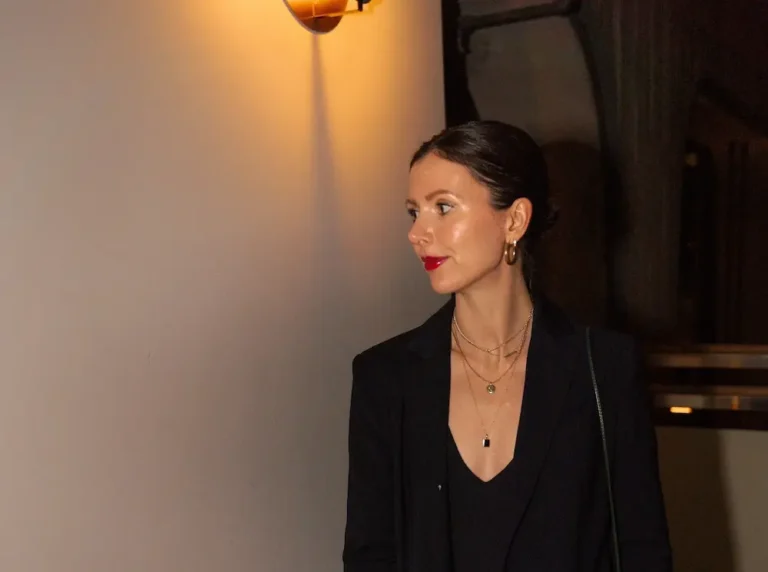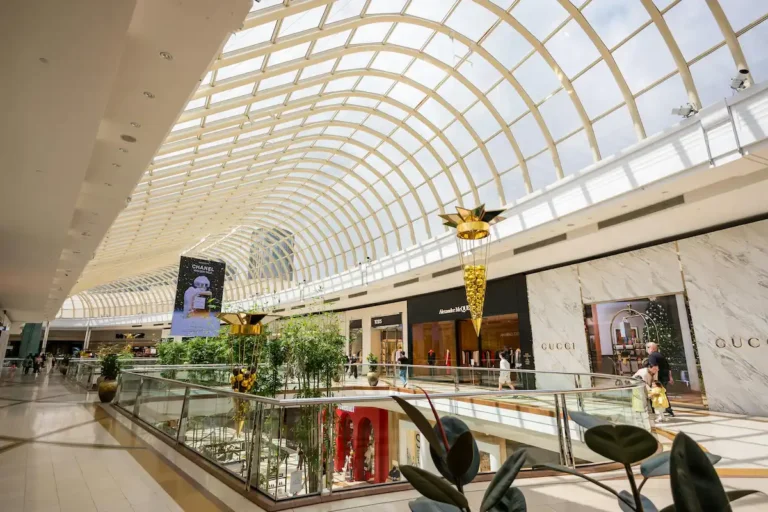Elegance in Exile: Melbourne’s Quiet Luxuries for the Discerning Traveler
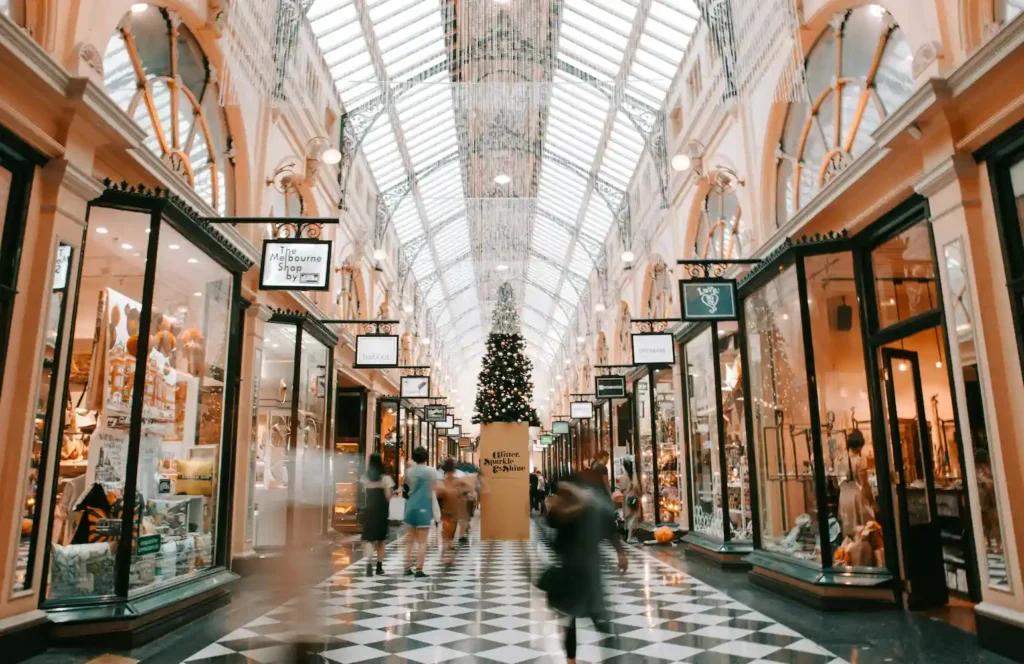
In the southern hush of Australia’s cultural heart, Melbourne unfolds like a whispered secret—its laneways etched with the patina of heritage, its air laced with the faint bitterness of espresso and the promise of reinvention. For the international visitor—be it the New York aesthete chasing a fleeting escape or the London sophisticate seeking solace from the seasonal churn—Melbourne’s luxury enclaves offer more than commerce; they are interludes in time, where the tactile poetry of silk and leather meets the city’s understated grandeur. Here, amid the neoclassical facades and emerald canopies, one discovers not ostentation, but the art of quiet elevation: a Bottega Veneta knot bag glimpsed through rain-streaked glass, a Celine silhouette that echoes the curve of the Yarra’s bend.
This is no frenzied spree, but a deliberate promenade, where heritage buildings—once ballrooms for gold-rush barons—now cradle the world’s most revered houses. As the autumn light slants low over the CBD, these spaces invite contemplation, their shelves a curation of restraint and reverie. We trace ten such sanctuaries, clustered by geography for the ease of the jet-lagged wanderer, each shadowed by nearby havens: a sun-dappled café for reflection, perhaps a gallery’s hush to temper the thrill. Melbourne, ever the contrarian, reminds us that true style blooms in the spaces between—where the global meets the intimate, and the self is subtly refashioned.
The Paris End: Collins Street’s Timeless Reverie
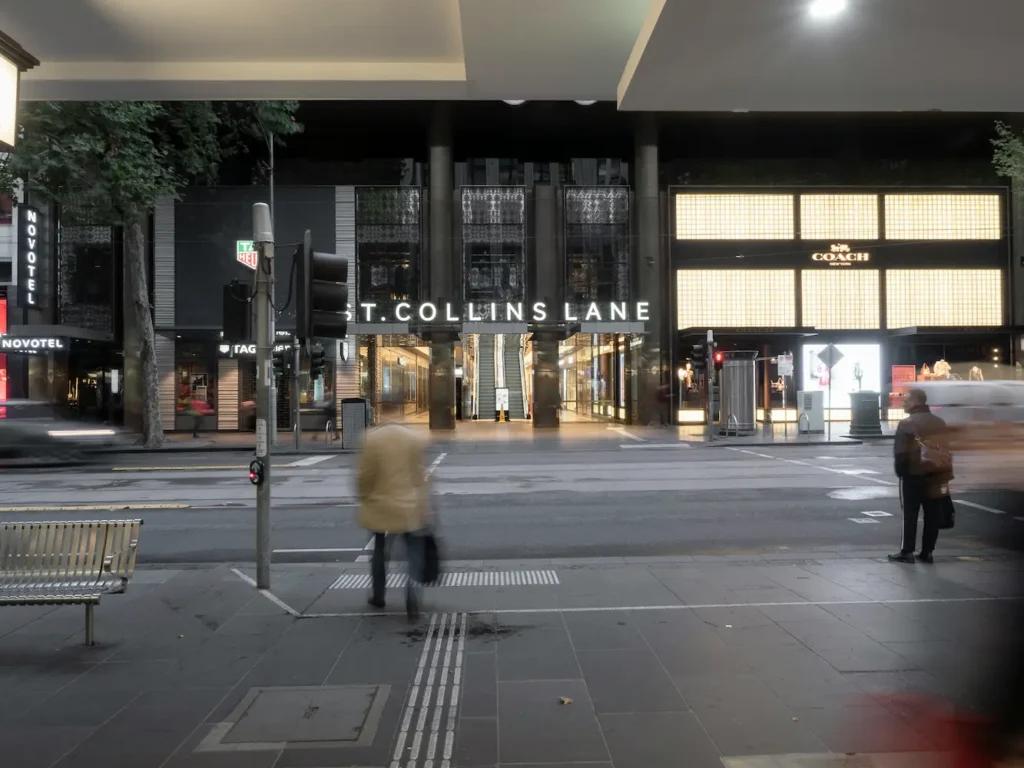
Collins Street, Melbourne’s own Champs-Élysées, unfurls eastward from the CBD’s pulse, its “Paris End” a canopy of London plane trees framing Victorian-era spires. These heritage-listed edifices, born of the 1850s gold boom, whisper of opulence past: grand archways once echoing with the clink of champagne flutes, now softly lit by the glow of atelier windows. Stroll here in the late afternoon, when the light gilds the bluestone kerbs, and let the rhythm of your steps dictate the discoveries.
Gucci
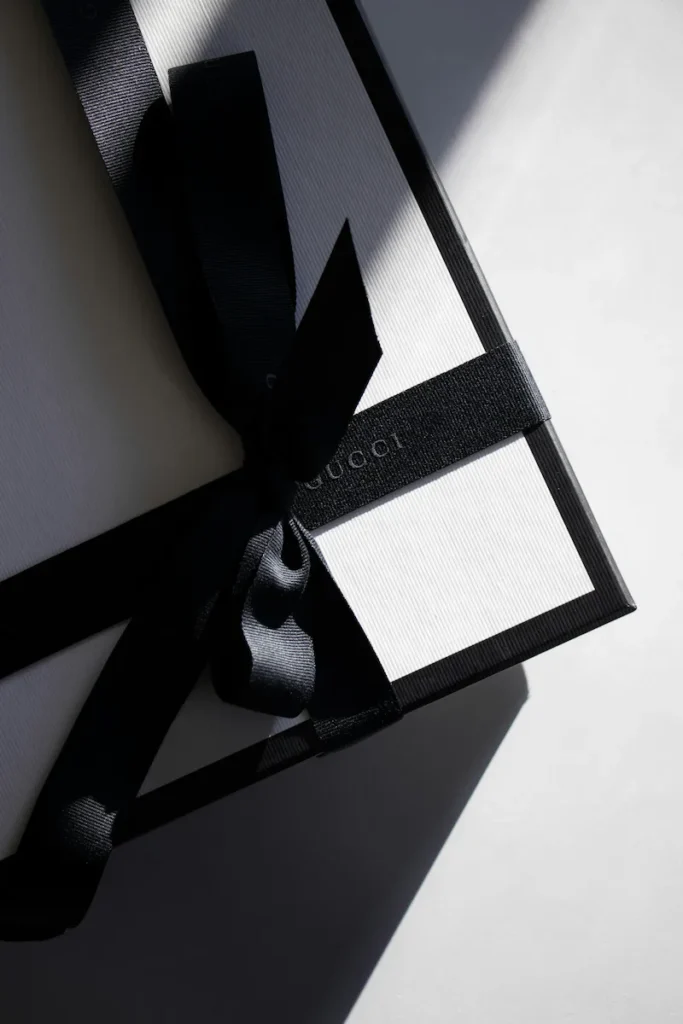
(161 Collins Street) anchors this stretch with its flagship poise, a bastion of Italian bravura where monogrammed leathers converse with ready-to-wear’s fluid drama. The building, a restored 1930s modernist gem, features soaring ceilings that amplify the quiet theater of selection—Gucci’s full collections, from whisper-soft cashmeres to those audacious horsebit loafers, a Net-a-Porter staple for the transatlantic wardrobe.
Nearby, the Block Arcade (97 Elizabeth Street, a mere five-minute saunter) beckons with its Renaissance mosaic floors and gaslit vaults, a 1891 relic where Aesop’s alchemical scents mingle with the steam of passing trams.
Pause at Liminal (161 Collins Street), a subterranean café of limpid restraint, where single-origin brews from Mornington Peninsula roasters arrive alongside house-made pastries, the ideal interlude before the street’s siren call resumes.
Versace
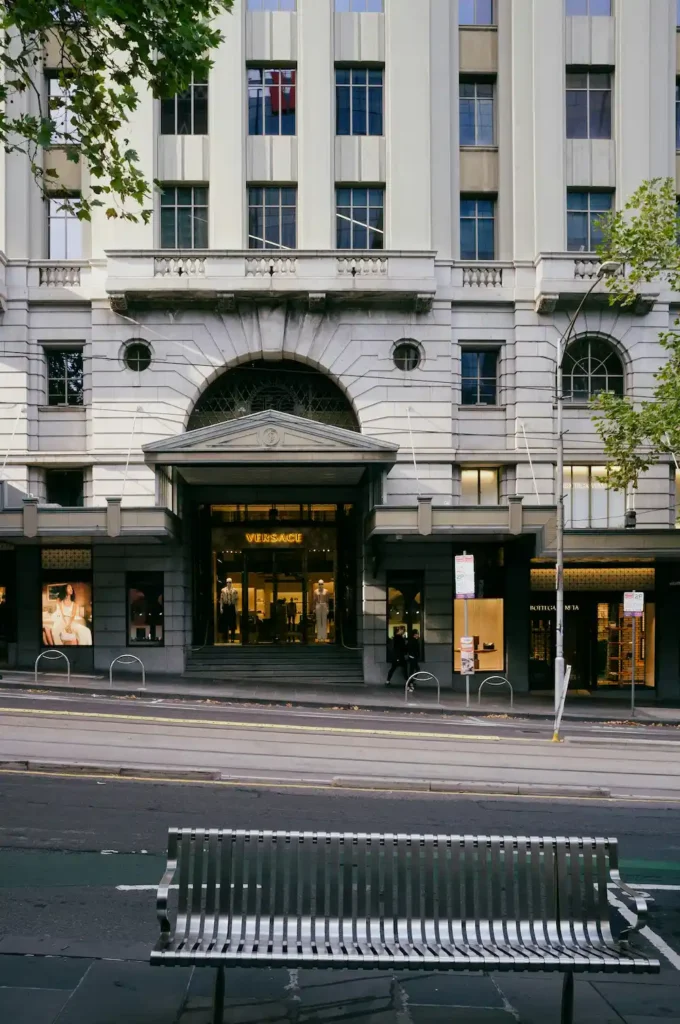
(Boutique Shop 2, 161 Collins Street, Melbourne) commands the Paris End with its baroque audacity, a radiant jewel within a 1930s modernist edifice where etched glass and soaring ceilings evoke a bygone ballroom’s grandeur. Here, Versace’s Medusa-emblazoned silks, gold-threaded tailoring, and chainmail accessories — a bold canto of excess tempered by Melbourne’s understated pulse. The building, a heritage-listed relic of the gold-rush era, whispers of colonial soirées, its cornices framing the plane trees’ dappled shade.
Celine
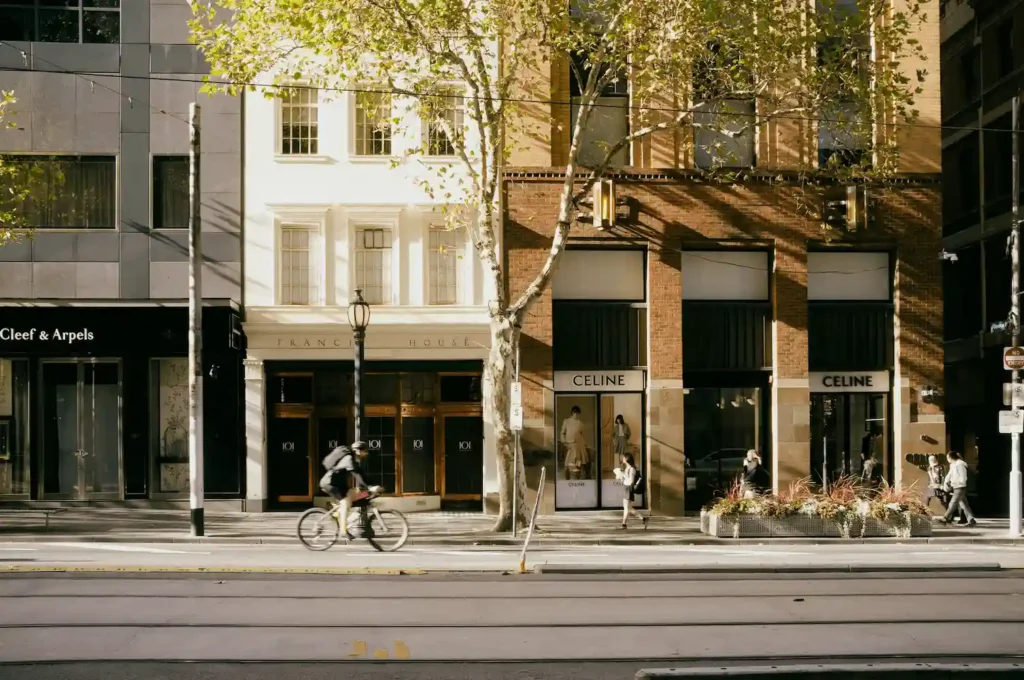
(167 Collins Street) emerges as a minimalist hymn within a 1920s neoclassical facade, its limestone arches and polished vitrines a quiet counterpoint to the Paris End’s gilded hum. The boutique, a temple to Hedi Slimane’s austere elegance, unveils Celine’s Net-a-Porter staples—tailored wool coats, Triomphe-embossed leather, and silk scarves that drape like whispered secrets—each piece a study in refined restraint. The building’s heritage cornices, etched by artisans of the gold-rush era, lend a gravitas that mirrors Celine’s timeless poise. Steps away, the Block Arcade (97 Elizabeth Street) unfolds its mosaic-tiled grandeur, while Liminal (161 Collins Street) offers a meditative pause with single-origin espressos and buttery financiers, the plane trees’ shadows softening the afternoon’s gleam for the global wanderer.
Dior

(205 Collins Street), in a facade of pearl-gray stone that dates to 1910, embodies French filigree with its ateliers of embroidered tulle and ladylike tailoring. Dior’s ready-to-wear and accessories—think those saddle bags that cinch like a lover’s promise—evoke the house’s New Look legacy, seamlessly echoed in Net-a-Porter’s digital vaults. The building’s subtle corbels, carved by Italian stonemasons, lend a sculptural intimacy, as if the walls themselves curate the calm.
A stone’s throw away, Maverick (95 Little Collins Street) offers a minimalist refuge: oat milk lattes frothed to velvet, paired with seasonal tarts that nod to the orchards of the Yarra Valley, its plate-glass windows framing the arcade’s eternal promenade.
Louis Vuitton
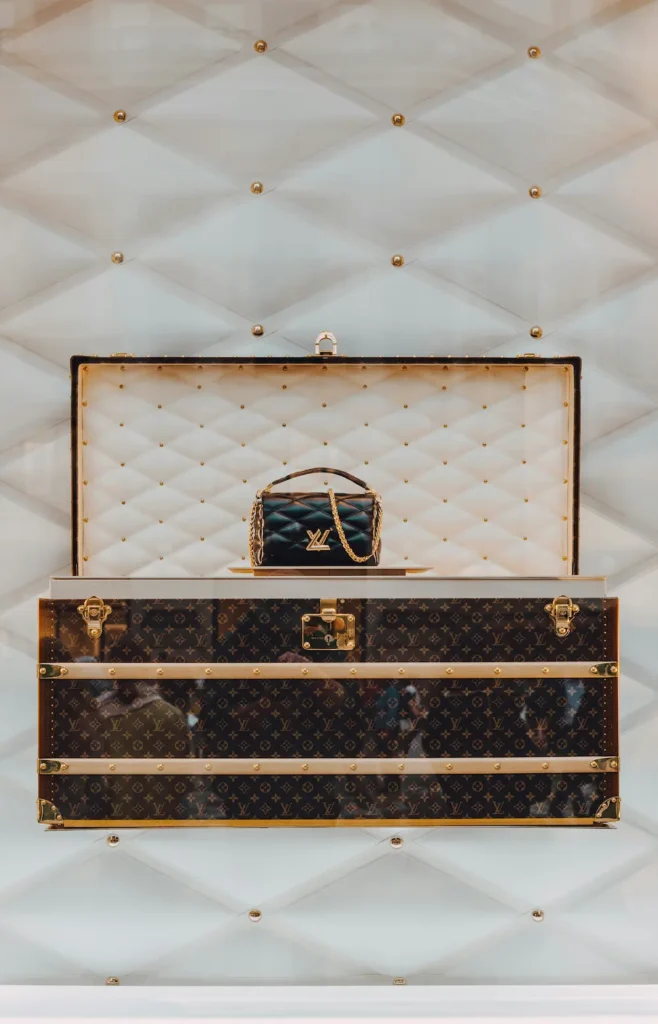
(139 Collins Street) resides in a 1920s edifice of etched glass and wrought iron, its monogrammed legacy unfurling across trunks that once ferried fortunes from Europe. Here, the brand’s full spectrum—from nomadic totes to whispered silks—unfolds in a space that feels like a private salon, where the leather’s patina tells tales of transoceanic voyages. For the American eye, accustomed to Fifth Avenue’s clamor, this is luxury distilled: intimate, unhurried.
Detour to Caffé E Torta (314 Little Collins Street), a 2017 Lord Mayor’s darling in a nook of exposed brick, where Sicilian tortas layered with mortadella yield to robust ristrettos, the air humming with the low murmur of locals plotting their next atelier conquest.
Bourke Street’s Heritage Pulse
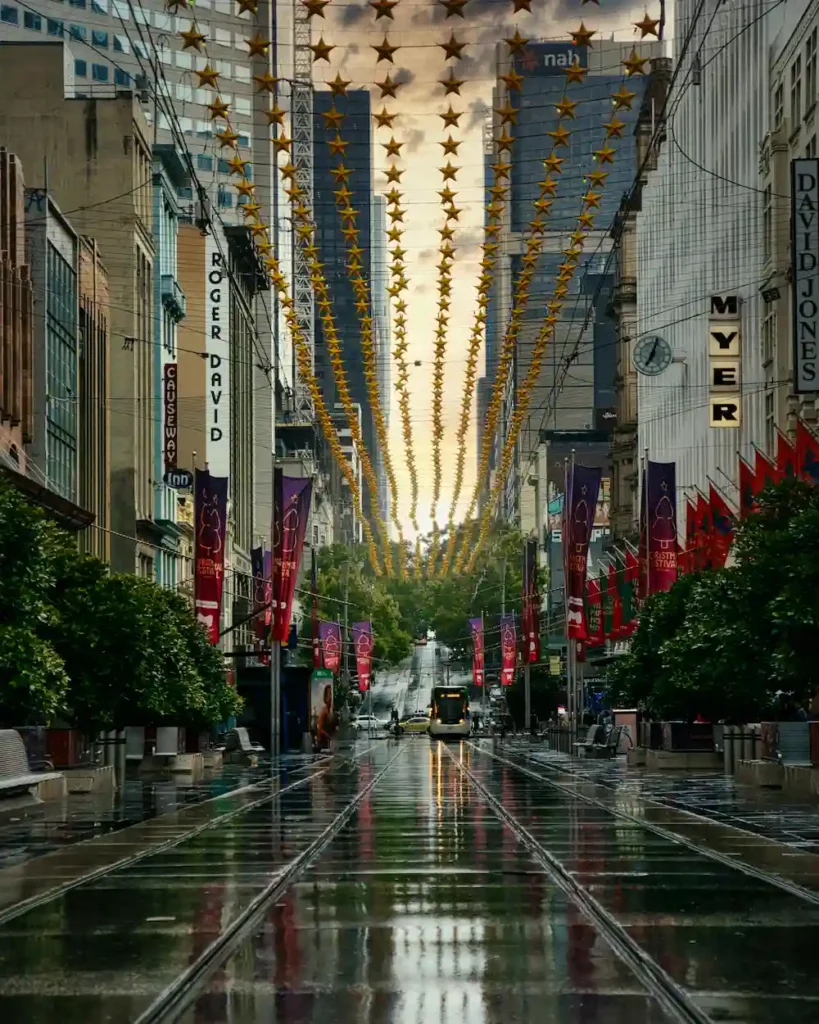
A gentle pivot northward from Collins leads to Bourke Street, where the CBD’s energy simmers beneath a lattice of awnings and neon relics. These blocks, etched by the 19th-century theater district’s footfall, house arcades like the Royal (1869), its mythological mosaics a portal to an era when shopping was spectacle—gas lamps flickering over velvet drapes.
Chanel

(258 Flinders Lane, adjacent to Bourke’s fringe) occupies a corner of hushed elegance in a 1880s warehouse reborn, its black-and-white austerity a counterpoint to the lane’s graffiti-kissed vitality. Chanel’s couture-inspired pieces—tweed jackets with a subversive edge, quilted chains that drape like heirlooms—align flawlessly with Net-a-Porter’s curated canon, a nod to the house’s unyielding poise. The building’s iron-lace balconies, remnants of Melbourne’s industrial lacework, frame views of Flinders’ creative churn.
Just across, Pellegrini’s Espresso Bar (66 Bourke Street), a 1954 Italian transplant in a heritage nook, serves granita di anguria alongside lasagne slabs, its curved neon sign a beacon for those seeking solace in the familiar ritual of standing-room coffee.
David Jones

(310 Bourke Street), ensconced in a 1907 beaux-arts behemoth of marble and gilt—once the southern hemisphere’s tallest structure—sprawls across floors where Balenciaga’s oversized volumes converse with Gucci’s baroque flourishes and Chloé’s bohemian whispers. This is department-store grandeur without the crush, its grand staircase a helical poem in travertine. Ascend to the rooftop terrace, if inclined, for city vistas, then descend to Axil Coffee Roasters (565 Bourke Street), where single-estate beans from Ethiopian highlands yield brews of crystalline clarity, accompanied by almond croissants that shatter like autumn leaves.
South Yarra’s Verdant Interlude
A short tram ride south from the CBD transports one to South Yarra, where Toorak Road’s linden avenues frame a suburb of manicured restraint—heritage villas yielding to modernist pavilions, the Royal Botanic Gardens a verdant exhale nearby.
Le Louvre
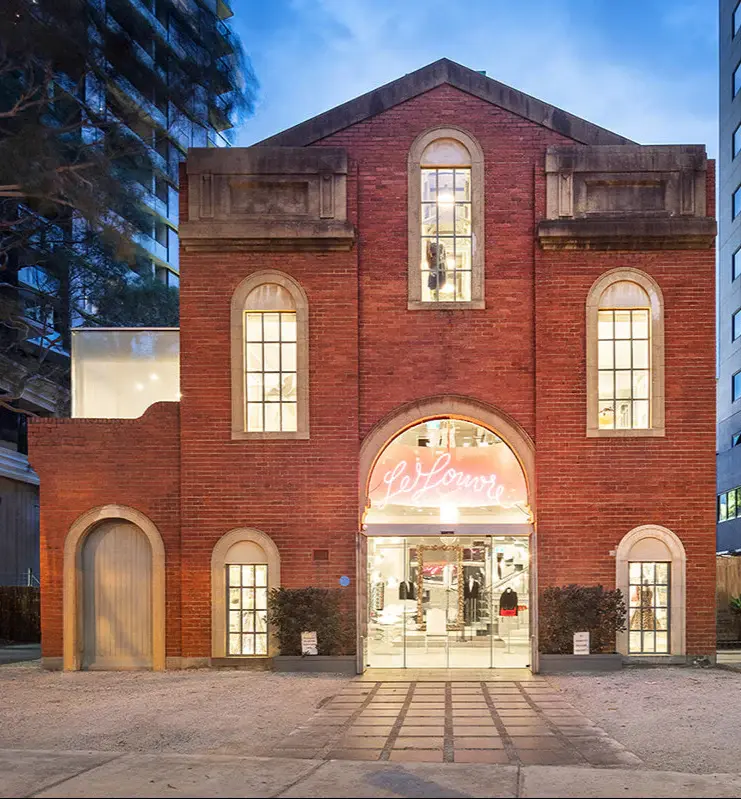
(2 Daly Street), in a 1930s art deco palace of curved cornices and terrazzo floors, exudes decadence without declaration: Saint Laurent’s leather-bound reveries, Balmain’s armored jackets, Stella McCartney’s ethical silks, and Bottega Veneta’s intrecciato weaves, each a Net-a-Porter archetype. The building’s original chandeliers, salvaged from a Parisian import, cast prismatic light on rails that feel like a private archive. Adjoining Fawkner Park, it’s a prelude to repose; linger at Two Birds One Stone (12 Claremont Street), a sunlit canteen where vegan crumpets arrive smoked with Tasmanian salmon alternatives, the Botanic Gardens’ eucalypts scenting the breeze through open bi-folds.
Grace Melbourne
(1065 High Street, Armadale’s edge), housed in a 1920s bungalow of white stucco and iron lace—echoing South Yarra’s federation filigree—champions Chloé’s flowing asymmetry, Khaite’s New York minimalism, Miu Miu’s playful distortions, and Proenza Schouler’s graphic edge, alongside Bottega’s quiet virtuosity. An Australian-born haven (Grace is local lineage), it bridges hemispheres with effortless grace. Nearby, the Royal Botanic Gardens unfold in 38 hectares of rare orchids and camellia groves, a living gallery for the contemplative shopper. Fortify at Baker Bleu outpost or Proud Mary (South Yarra flagship), where Yarra Valley pastries meet brews roasted on-site, the terrace overlooking avenues where magnolias shed petals like confetti.
Chadstone’s Expansive Horizon
Venture 20 minutes southeast by rail to Chadstone, the southern hemisphere’s colossus—a 1960s modernist sprawl reborn as a labyrinth of light-filled atria, its luxury wing a self-contained cosmos amid the mallee eucalypts.
Chadstone Shopping Centre
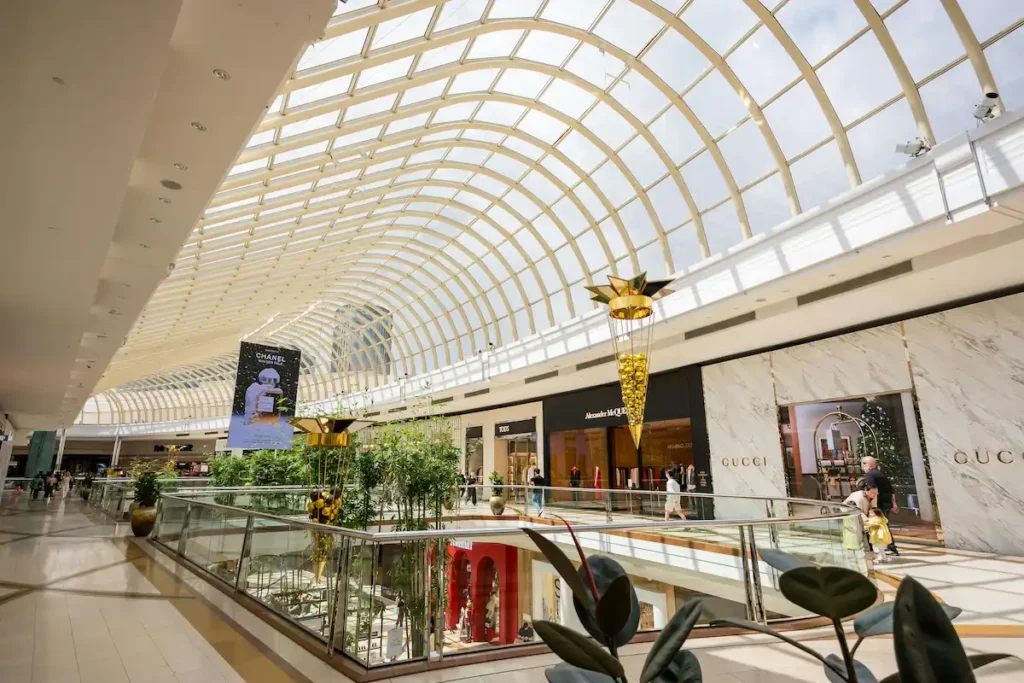
(1341 Dandenong Road), with its dedicated precinct of flagships, pulses with Gucci’s equestrian opulence, Burberry’s trenchcoat heritage, Balenciaga’s street-savant volumes, Chloé’s romantic riffs, and Prada’s intellectual edge—all Net-a-Porter touchstones in a space that marries scale with serenity. The center’s evolution from postwar bunker to verdant oasis (complete with rooftop apiaries) speaks to Melbourne’s adaptive soul. Beyond its glass-domed heart, the surrounding suburbs yield to the Dandenong Ranges’ mist-shrouded trails. Recharge at Bouchee Café (within Chadstone), where matcha lattes steam beside financier pastries, or Qahwah House, a late-night arabica haven where cardamom pods infuse the air, extending the day’s elegiac rhythm into twilight.
In Melbourne, luxury is not acquired but absorbed—a subtle alchemy of stone and stitch, where the self emerges sharper, more attuned. These precincts, with their layered histories and lingering scents of rain on wool, offer the international guest a canvas for quiet reinvention. As the trams chime into the gloaming, carry forth not parcels alone, but the city’s unspoken invitation: to wear the world lightly, and let it, in turn, adorn you. For those whose journeys span continents, platforms like Net-a-Porter extend this Melbourne reverie, bridging the tactile to the timeless. Until your next descent into these southern latitudes.

